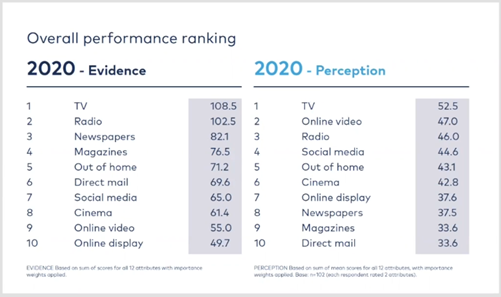It’s hard to work in the news industry and not be acutely aware of the proliferation of fake news, misinformation, and disinformation. A topic that was explored in depth recently at an INMA webinar given by Ulbe Jelluma, Managing Director Europe of Print Power.
Jelluma presented a compelling case outlining the supporting evidence that suggests a significant disconnect between perception v. reality regarding print effectiveness amongst advertising decision makers. The narrative of the perceived decline in the effectiveness of print media is certainly, however Jelluma proposes that there has been a convergence between misinformation and advertising effectiveness. He then proceeds to outline the perception and behavioural drivers that are informing planning decisions amongst media planners and marketeers.
Before we further explore Jullume’s argument further, it might be worth revisiting some of the most recent evidence on the effectiveness of advertising in news brands. A 2021 IAP Databank Study by Peter Field in conjunction with Newsworks UK, analysed 182 advertising campaigns across six years and demonstrated beyond doubt that news brands are having a significant positive impact on key business drivers such as market share, pricing and profit. These positive business effects can be predominately attributed to context, as brands that choose to appear in news brands are perceived to be more trustworthy and high quality by readers, two of the most powerful growth drivers for advertisers. Furthermore, there is a positive cumulative impact when other channels such as digital and social are introduced.
The report outlines that over the last six years, the impact on trust in brands that advertise on a single news brand platform has increased by 17 percentage points (30% in 2020 vs 13% in 2014). When the advertising appears across two news brand platforms (print and digital) the increase over the same time period is nearly 50 percentage points higher (56% in 2020 vs 9% in 2014).
There is undoubtedly a link to the increased trust and appreciation of the value of journalism and news brands since the onset of the Coronavirus pandemic. A 2020 Newsworks UK report highlighted that 68% of news consumers stated that they “appreciate and value journalism more since the global coronavirus pandemic began”. Interestingly, the increase is most pronounced in the under 35-year-olds, with 77% valuing the role of journalists more now in providing reliable information and news.
So, in the face of such overwhelming evidence on the effectiveness of advertising in news brands why is there a sense of incredulousness amongst decision makers? It might be worth exploring Jalloume hypothesis in more detail; he suggests that whilst there has been a shift in consumer behaviour and media consumption over the past 20 years it is not as dramatic as purported. A recent study by Equibity demonstrates this disconnect between channel effectiveness and perception amongst decision makers. Evaluation across 11 different criteria indicate that newsprint is the third most effective medium however the perception of advertising decision makers is that it ranks eighth.

Jalloume argues that it is this negative performance perception, informed by generation factors and confirmation bias that’s influencing media choices. He also suggests that the lack of attention that print is getting in the advertising mix is being compounded by industry and channel silos that are working against cross channel media strategies, predominately due to a scarcity of comparative effectiveness data.
It’s clear that as an industry there is an opportunity for a more evidence-based approach to the evaluation of media effectiveness, how perceptions inform our channel choice and how precision can drive growth.
If you would like to discuss driving impact and effecting positive business impact for your brand, get in touch today.
Sources
INMA: Webinar – What We Need to Tell Advertisers and Agencies About the Power of Print
IPA Databank Study 2021 » Newsworks
World Without News » Newsworks



Blog
Source: Newsworks
Cumulative impact of trust when advertising appears on +1 platforms.
Trust levels increase when you could combine print and digital
Trust is one of the most important of 5 factors for advertising success



